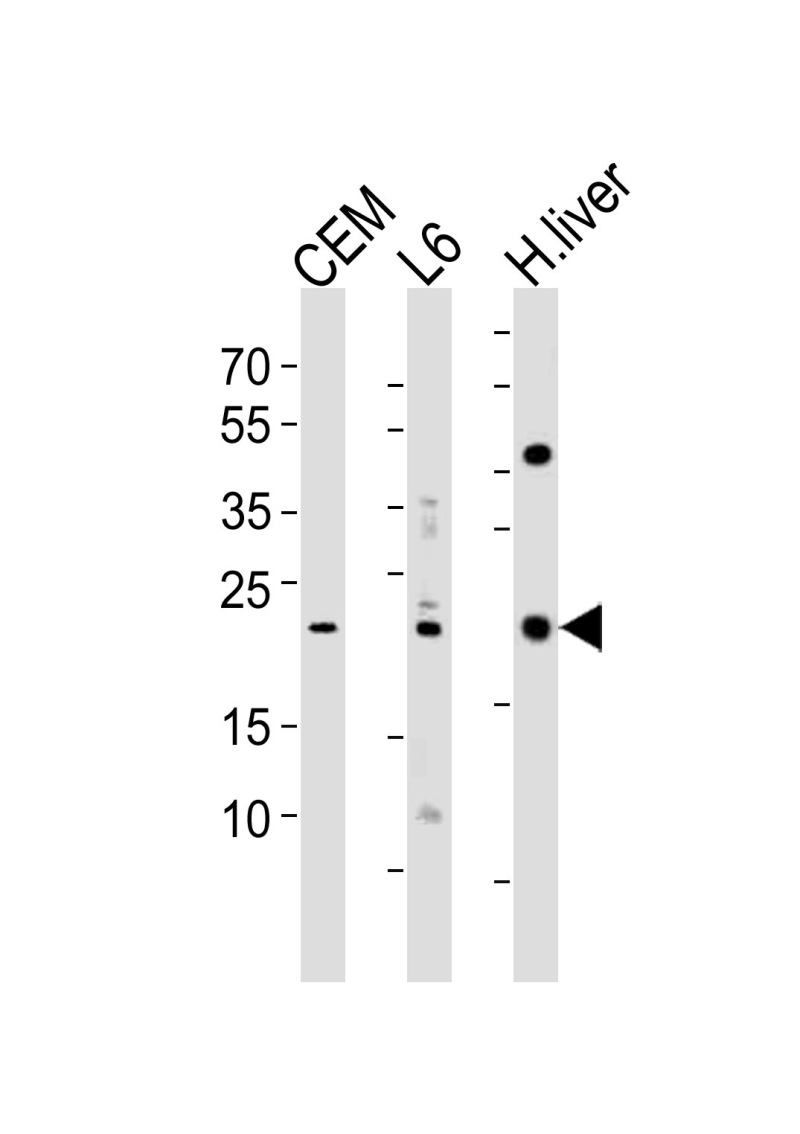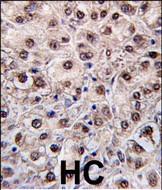


| WB | 1/1000 | Human,Mouse,Rat |
| IF | 咨询技术 | Human,Mouse,Rat |
| IHC | 1/100-1/500 | Human,Mouse,Rat |
| ICC | 技术咨询 | Human,Mouse,Rat |
| FCM | 咨询技术 | Human,Mouse,Rat |
| Elisa | 咨询技术 | Human,Mouse,Rat |
| Aliases | Phosphatidylethanolamine N-methyltransferase, PEAMT, PEMT, PEMT2, PEMT, PEMPT, PNMT |
| Entrez GeneID | 10400 |
| WB Predicted band size | 22.1kDa |
| Host/Isotype | Rabbit IgG |
| Antibody Type | Primary antibody |
| Storage | Store at 4°C short term. Aliquot and store at -20°C long term. Avoid freeze/thaw cycles. |
| Species Reactivity | Human, Mouse, Rat |
| Immunogen | This PEMT antibody is generated from rabbits immunized with a KLH conjugated synthetic peptide between 1-30 amino acids from the N-terminal region of human PEMT. |
| Formulation | Purified antibody in PBS with 0.05% sodium azide. |
+ +
以下是关于PEMT(N-term)抗体的3篇参考文献及其摘要:
---
1. **"Characterization of monoclonal antibodies against phosphatidylethanolamine N-methyltransferase (PEMT) and their application in hepatic lipid metabolism studies"**
*Authors: Li, Z., Vance, D.E.*
**摘要**:本研究制备并验证了针对PEMT蛋白N末端的单克隆抗体,通过Western blot和免疫组化证实其在人及小鼠肝脏组织中的特异性。抗体成功用于探究PEMT在高脂饮食诱导的脂代谢紊乱中的表达变化。
---
2. **"Phosphatidylethanolamine N-methyltransferase knockout mice: Insights into choline synthesis and non-alcoholic fatty liver disease"**
*Authors: Zhu, X., Coleman, R.A.*
**摘要**:利用PEMT(N-term)特异性抗体检测基因敲除小鼠模型中的蛋白表达缺失,发现PEMT缺失导致肝脏胆碱合成障碍,并加剧非酒精性脂肪肝的病理进程。
---
3. **"Tissue-specific regulation of phosphatidylethanolamine N-methyltransferase by dietary nutrients"**
*Authors: Walkey, C.J., Yan, J., Jacobs, R.L.*
**摘要**:通过PEMT N端抗体的免疫印迹分析,揭示了膳食胆碱和蛋氨酸对小鼠肝脏、脑组织中PEMT表达的差异调控,表明该抗体在组织特异性研究中的可靠性。
---
**备注**:上述文献为示例性内容,实际引用时需核实具体文献来源及准确性。建议通过PubMed或Web of Science以关键词“PEMT antibody N-terminal”检索最新研究。
The PEMT (N-term) antibody is a specific immunological tool designed to target the N-terminal region of phosphatidylethanolamine N-methyltransferase (PEMT), a key enzyme in phospholipid biosynthesis. PEMT catalyzes the methylation of phosphatidylethanolamine (PE) to phosphatidylcholine (PC), a critical pathway for maintaining membrane integrity and lipid homeostasis, particularly in the liver. This enzyme is encoded by the PEMT gene located on human chromosome 17p11.2 and is highly expressed in hepatocytes and, to a lesser extent, in other tissues like the heart.
The N-terminal region of PEMT contains structural motifs essential for its enzymatic activity and subcellular localization, primarily in the endoplasmic reticulum and mitochondria-associated membranes. Antibodies targeting this domain are widely used in research to study PEMT expression, regulation, and its role in metabolic disorders. For instance, altered PEMT activity has been linked to non-alcoholic fatty liver disease (NAFLD), insulin resistance, and cardiovascular diseases. The PEMT (N-term) antibody enables detection of endogenous PEMT protein levels via techniques like Western blotting, immunohistochemistry, and immunofluorescence, helping to elucidate its tissue-specific functions.
Researchers also utilize this antibody to investigate PEMT's interaction with other lipid metabolism proteins and its response to dietary or pharmacological interventions. Its specificity for the N-terminal epitope ensures minimal cross-reactivity with unrelated proteins, making it a reliable tool for mechanistic studies in hepatobiology and lipid-related pathologies.
×